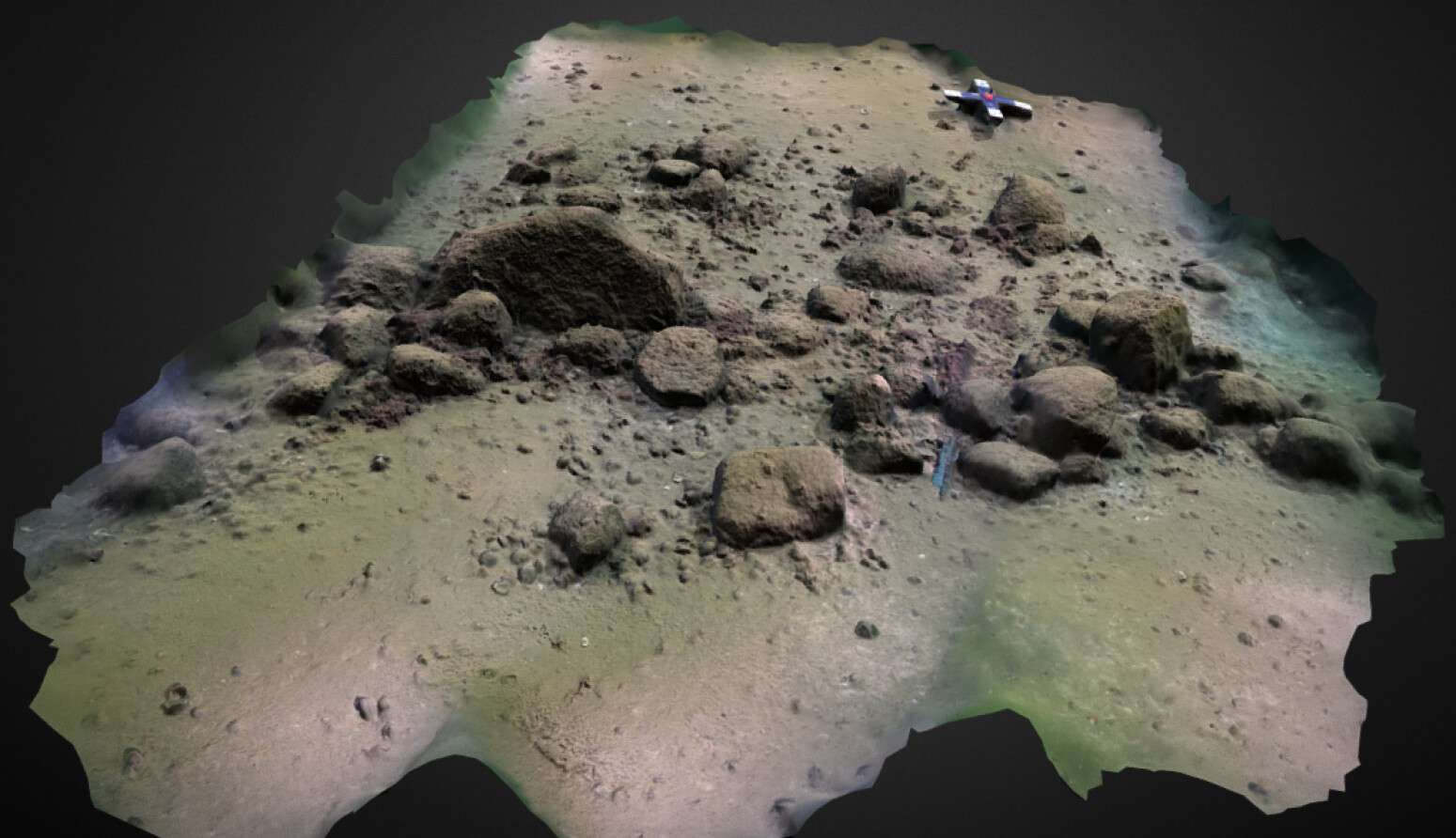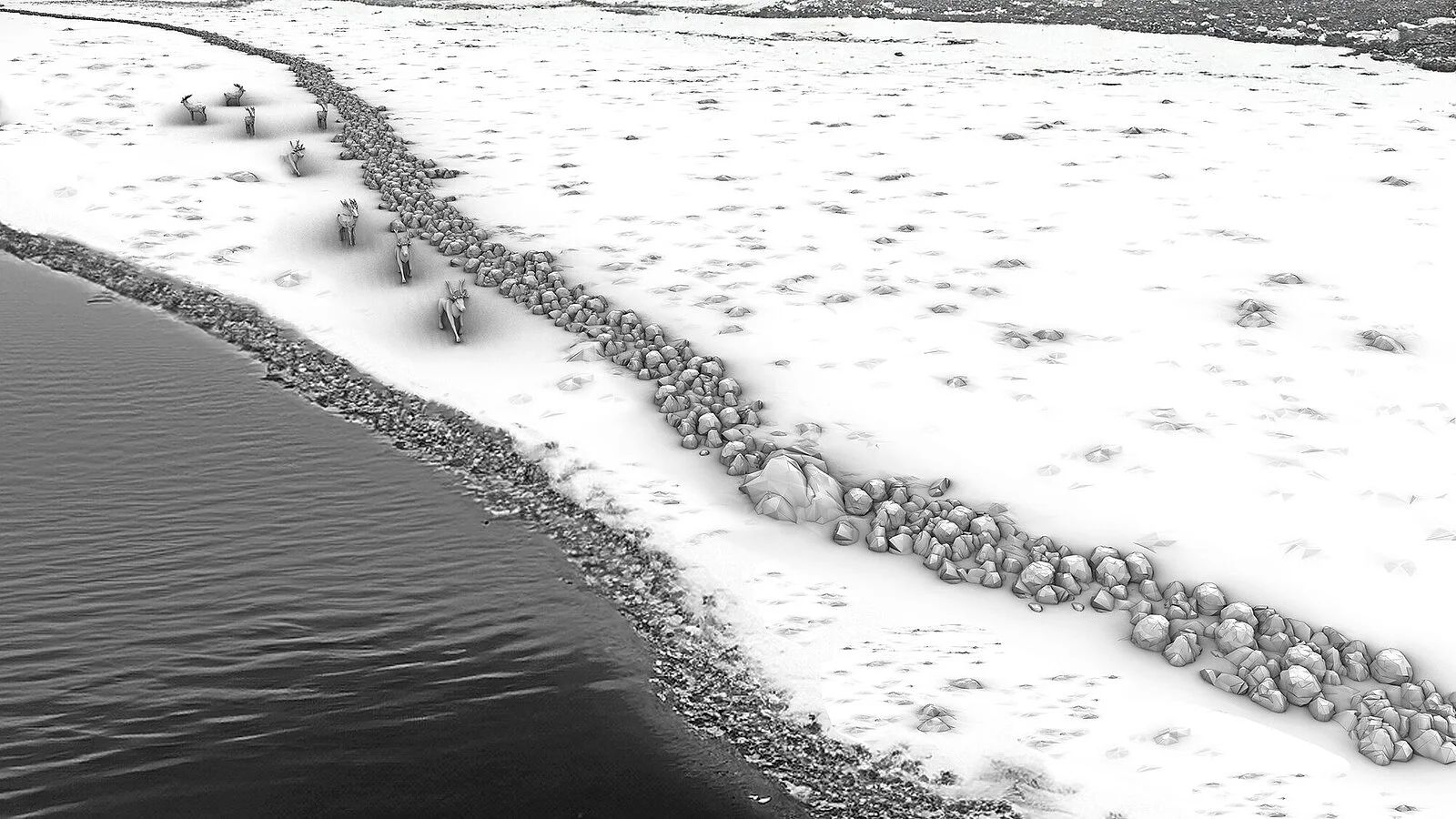Follow us on Google News (click on ☆)

3D model of a section of the Blinkerwall adjacent to the large rock at the wall's western end. Photos taken by Philipp Hoy, University of Rostock. The model was created using Agisoft Metashape by J. Auer, LAKD MV. The scale bar at the top right of the image is 50 cm (approximately 19.7 inches).
A team of researchers from various disciplines concluded that this structure was erected by prehistoric hunter-gatherers about 11,000 years ago for the purpose of reindeer hunting. This discovery, recently published in the journal Proceedings of the National Academy of Sciences (PNAS), represents the first Stone Age hunting structure discovered in the Baltic Sea region.
Initially, a team of researchers and students from Kiel University intended to study the manganese crusts on a basal till ridge located about 6.2 miles (10 kilometers) off Rerik, in the Mecklenburg Bay. However, during their research, they discovered a regularly aligned stone row stretching 1,063 yards (970 meters). This structure, consisting of about 1,500 stones a few tens of centimeters in diameter, connects several large blocks several meters in size. After reporting their finding to the State Office for Culture and Monument Preservation of Mecklenburg-Western Pomerania, further investigations were coordinated.
It turned out that the stone wall is located on the southwest flank of a basal till ridge, parallel to a basin adjacent to the south, likely an ancient lake or bog. The Baltic Sea being 69 feet (21 meters) deep at this location, the stone wall would have been built before the sea level rose significantly after the end of the last Ice Age, about 8,500 years ago.

Reconstruction of the structure.
Scientists from the Leibniz Institute for Baltic Sea Research Warnemünde, the University of Rostock, the Centre for Baltic and Scandinavian Archaeology, the German Aerospace Center, the Alfred Wegener Institute, the Collaborative Research Center 1266, and other institutions used modern geophysical methods to create a detailed 3D model of the wall and reconstruct the surrounding ancient landscape. Sediment samples taken from the adjacent basin helped to specify the probable period of the wall's construction. Additionally, divers from the University of Rostock and Kiel University explored the stone wall.
Investigations suggest that the stone wall likely has neither a natural nor modern origin, its geometry and location ruling out these possibilities. Researchers estimate it would have been constructed after the end of the last Ice Age when the landscape was not yet submerged by the Baltic Sea. It likely served as a trap for herds of reindeer, their main source of food, by the hunter-gatherers of that time. Similar structures used for caribou hunting have been discovered in other parts of the world. This discovery opens new perspectives on the life of the first human communities in the region.
Researchers plan to further explore the stone wall and surrounding seabed using sonar and additional dives. Luminescence dating could also provide valuable information on the period of the wall's construction. Further research is necessary to better understand this fascinating megastructure and its role in the lives of prehistoric populations.